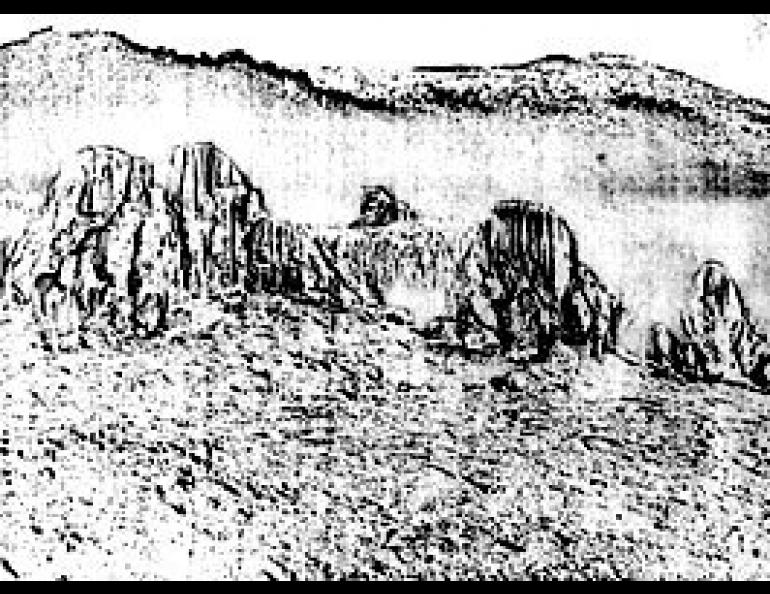
Tors
Tors are craggy spires seen on high slopes or hilltops of interior Alaska and elsewhere in the world. They have a special significance, for they are monumental proof that Pleistocene glaciers did not cover the areas where the tors are found. If glaciers had covered the areas, the tors would have been scraped away by the ice. Thus, the tors demonstrate that central Alaska was open to the migration of plants and animals even during the height of the last glaciation.
The most accessible tors in Alaska are those seen on the right-hand side of the road as one nears Chena Hot Springs, northeast of Fairbanks. These granite spires rise up as high as 30 meters (100 feet) above the slopes and table-like terraces upon which they sit. Tors occur on Wickersham Dome where they can be seen from Livengood Road, in inaccessible parts of the Yukon-Tanana Uplands, and on a plateau near the Gerstle River crossed by the Alaska Highway southeast of Big Delta.
Tors are created by chemical weathering of rocks, by exfoliation (the flaking off of rock pieces by rapid changes in temperature), and by frost wedging. In Alaska, frost wedging is the main cause. Water enters fractures in the rocks and freezes. Repeated freezing and thawing wedges the rock apart. The debris created by the breaking up of the rocks is transported away downslope by processes involving frost action (solifluction). The result is a tor towering over a nearly flat terrace called a cryoplanation terrace. The tor and the terrace together appear in sharp contrast to each other--and create an unearthly scene.





